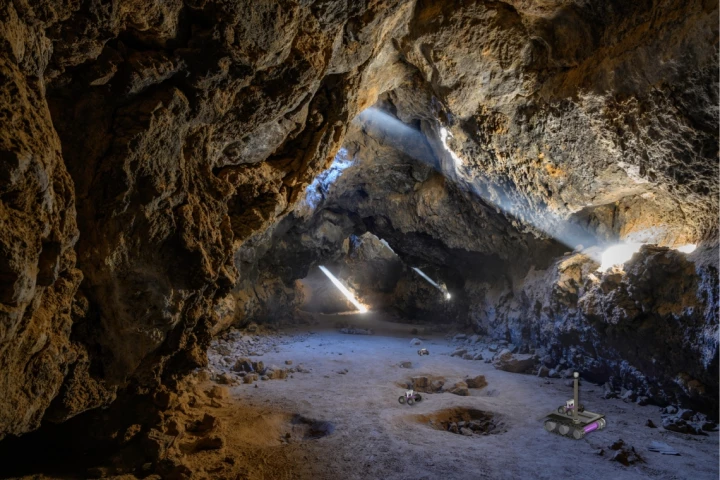Cave
-
Deep underground in a dark, sulfuric cave, scientists have made an incredible discovery – a giant communal spider web spanning more than 1,000 square feet, home to an estimated 110,000 spiders that defy nature to coexist in harmony.
-
Storing clean energy to use later poses a challenge in regions that have long stretches with low wind and sunlight, stressing power grids fed by renewable sources. Augwind Energy believes it's found a solution thousands of feet below the ground.
-
A new zombie pathogen has been discovered in Ireland. This insidious fungus infects cave spiders and alters their behavior to help spread its spores to new victims.
-
More than 400 footprints across a diverse range of species have been identified in incredible detail for the first time, with researchers enlisting a trio of expert indigenous trackers to help solve the mystery of these 5,000-year-old records.
-
Scientists have discovered evidence of what may be the world’s oldest known human burial. The 300,000 year-old Homo naledi remains show signs of having been intentionally buried in a chamber marked with symbols. But other scientists aren’t so sure.
-
Mandrake and henbane are almost synonymous with secret rituals. In fact, after analyzing hair samples from a secret cache in a Menorcan cave, new evidence indicates that plants like these were ingested during burial ceremonies about 3,000 years ago.
-
Exploring an unmapped cave system is a daunting enough prospect on its own, but think how risky it would be to do so on another planet such as Mars. That's why a new system is in the works, which would use "breadcrumb"-dropping rovers to do the job.
-
The Moon isn’t the most hospitable place, but that’s not stopping NASA from sending humans back there soon. Thankfully, an orbiter has now found a region of the Moon with year-round jeans-and-jacket weather – underground caves.
-
Archaeologists have discovered what they claim to be the oldest example of figurative art made by human hands. An ochre painting of pigs, found on a cave wall in Indonesia, has been dated to be at least 45,500 years old.
-
It’s generally believed that the Clovis people were the first humans to inhabit the Americas, as long as 15,000 years ago. But now archaeologists have found evidence in a cave in Mexico that suggests humans visited as early as 30,000 years ago.
-
A new species of human has been discovered in a cave in the Philippines. Named Homo luzonensis after the island of Luzon where it was found, the hominin appears to have lived over 50,000 years ago, painting a more complete picture of human evolution.
-
Early hominins were known to have cross-bred when they crossed paths, and now the most direct evidence of those meetings has been found. By sequencing the genome of a hominin bone from a Siberian cave, anthropologists have discovered the direct descendant of a Neanderthal and a Denisovan.
Load More











